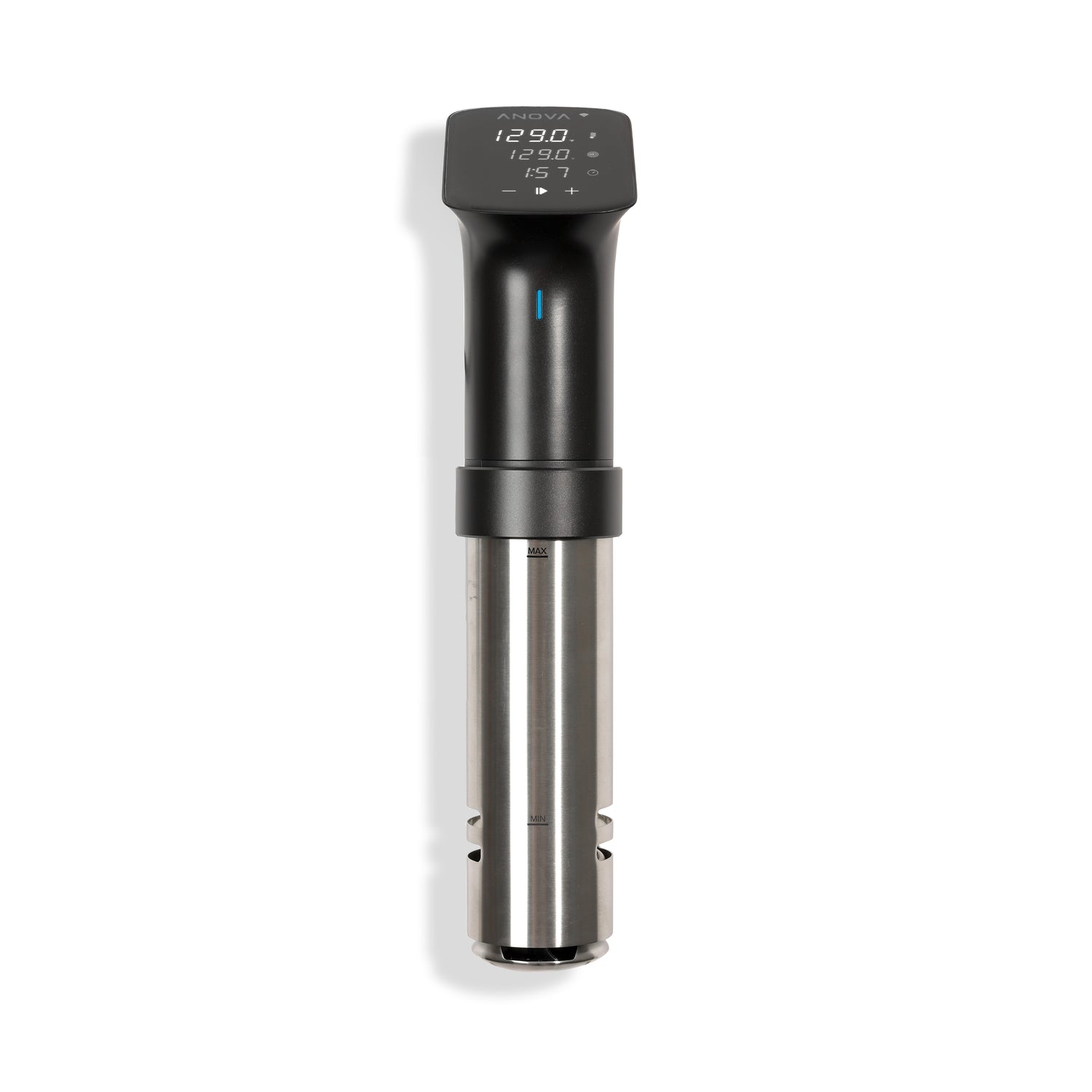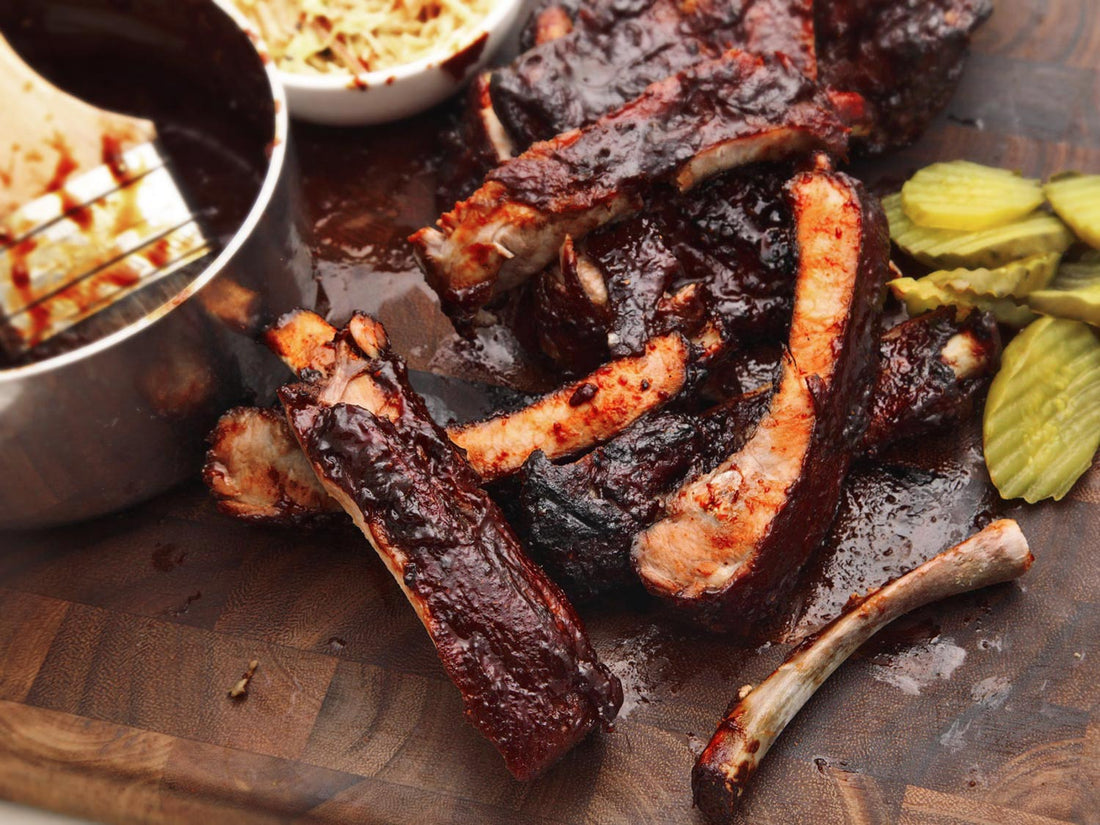Perfecting any recipe is a challenge for me. I am, shall we say, a bit obsessive with my testing. Perfecting sous vide ribs temp and time involves dozens of variables (cut of pork, the rub, the sauce, smoking, grilling, etc.), plus existing expectations (barbecue-lovers are the most exacting crowd around). What normally requires a few days of testing ended up taking over two weeks, plus several dozen individual tests to finally nail.

Once you get the basics down, it's easy to see the advantages of cooking sous vide ribs. However, nailing down the precise
sous vide baby back ribs time and temp can be challenging. When cooking ribs over live wood using traditional methods, o
ther issues like temperature and moisture control can arise. You have to account for environmental factors such as the amount of smoke getting to meat, how much ventilation the fire is getting, how heat is getting trapped inside the smoker or the grill, all while using an inherently unpredictable live-fire heat source. It's no wonder that it takes years of practice for the best barbecuers around to hone their craft. Sous-vide methods eliminate such unpredictability. There's no limit to cooking ribs
sous vide for 36 hours or more.
When I bite into a good barbecued rib, there are a few things I look for. First is texture. Ribs should be tender, never greasy, and the meat should still have a definite bite. If the meat slips and falls off the bones as you're trying to eat, they've been overcooked in my book (and, for the record, in the book of any competition barbecue judge). I want my ribs to have a nice gentle tug to them.
Next, I look for flavor. Barbecue ribs should be smoky, but not overly so. Too often I taste ribs that remind me more of an ashtray than serious eats. Smoke, just like any other seasoning, should be used to enhance meat, not overwhelm it. Similarly, a robust but balanced spice rub or sauce should bring out the best in the pork, not overwhelm it with gloppy sweetness.
For my recipe, I tested combinations of sous vide ribs temp and time, ranging from as low as 140°F (60°C) to as high as 180°F (82°C), with timings between 4 hours and up to 48. Unsurprisingly, I found that the lower the temperature, the longer it takes for tough connective tissue to soften, plus increased retained moisture. Ribs cooked at a higher temperature keep a more traditional texture than those cooked at a lower temperature, although both have advantages.
For extra meaty, succulent and tender ribs: I like giving my ribs a good rub of homemade spice blend and letting them rest for 4 to 12 hours to allow the salt to penetrate the meat, then cooking them at 145°F (63°C) for 36 hours to create an extra-meaty bite.
For tender, traditional BBQ ribs: At a higher temperature, you can recreate the classic, backyard BBQ rib texture with well-rendered fat and meat that shreds as you eat it. To get this style, I cooked the ribs at 165°F (74°C) for 12 hours which resulted in a traditionally tender, slightly shreddy texture that pulls easily from the bone with just the slightest bit of resistance.
And what about that smoke? Well you could start or finish ribs on a smoker to get that specific flavor, but then you reintroduce unpredictability. It's much easier and more consistent to add a few drops of liquid smoke directly to the sous vide bags before sealing. A good quality liquid smoke like Wright's or Colgin are nothing more than wood smoke that has been condensed and captured in water and stuck in a bottle. It's literally the exact same stuff that gets deposited on your meat when you smoke it in a smoker, and there's no reason to shun or be afraid of it. I finish my ribs by either cooking them over moderate heat on a grill, or setting on a rack in the oven. If I'm adding sauce, I'll paint on a few layers toward the end of cooking to get a nice, thickly reduced coat.
The only thing missing from sous-vide ribs is that pink smoke ring, which is a purely cosmetic detail that offers no flavor or textural differences in traditional barbecue. If you must have it, adding pink curing salt to the rub before applying it to the pork will help set its color. Use about 2 grams of pink salt for every kilogram of pork (about .03 ounces per pound).
Explore sous vide ribs 36 hours recipes and more on the
Anova recipe page, plus don't forget to download the Anova Culinary app for the full guide on ribs. Keep an eye out for the next collection - coming soon!
 Once you get the basics down, it's easy to see the advantages of cooking sous vide ribs. However, nailing down the precise sous vide baby back ribs time and temp can be challenging. When cooking ribs over live wood using traditional methods, other issues like temperature and moisture control can arise. You have to account for environmental factors such as the amount of smoke getting to meat, how much ventilation the fire is getting, how heat is getting trapped inside the smoker or the grill, all while using an inherently unpredictable live-fire heat source. It's no wonder that it takes years of practice for the best barbecuers around to hone their craft. Sous-vide methods eliminate such unpredictability. There's no limit to cooking ribs
sous vide for 36 hours or more.
Once you get the basics down, it's easy to see the advantages of cooking sous vide ribs. However, nailing down the precise sous vide baby back ribs time and temp can be challenging. When cooking ribs over live wood using traditional methods, other issues like temperature and moisture control can arise. You have to account for environmental factors such as the amount of smoke getting to meat, how much ventilation the fire is getting, how heat is getting trapped inside the smoker or the grill, all while using an inherently unpredictable live-fire heat source. It's no wonder that it takes years of practice for the best barbecuers around to hone their craft. Sous-vide methods eliminate such unpredictability. There's no limit to cooking ribs
sous vide for 36 hours or more.





2 comments
😂 what a tool
I was thinking this might be an ok rib recipe but then i saw add liquid smoke. I immediately stopped reading as i knew from that simple phrase that this tutorial is how you ruin good food.